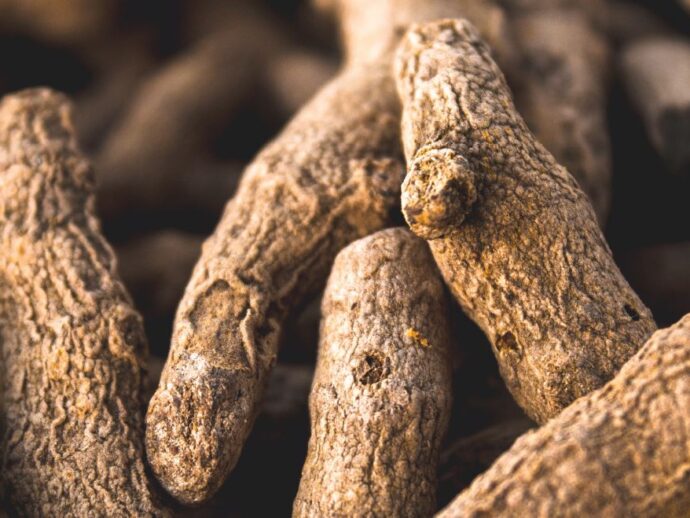
You’ve heard of macronutrients and micronutrients. They’re both vital for optimal nutrition. Now, there’s a newly defined category that could be just as important for well-being, one that sits right in between: mesonutrients.
Macro vs micro
Macronutrients are energy-producing nutrients needed in relatively large quantities in our diet: water, protein, fats, and carbohydrates. Micronutrients, which include vitamins and minerals, are just as crucial, but we only require them in small amounts.
And then there’s mesonutrients
Taking their name from the Greek word meso, which means middle, mesonutrients are the active compounds or ingredients in superfoods that are responsible for their health benefits. In other words, they put the “super” in superfoods.
What’s known as mesodosing involves isolating those substances in order to get a concentrated dose of nutrition.
“It’s the act of supplementing your diet with certain compounds that research has started to identify as beneficial in certain foods,” says Liz Powell, a registered dietitian at Vancouver’s Yaletown Nutrition. “People are taking these superfoods and trying to isolate the key nutrients that makes them ‘super’ to try and get as much benefit as possible in their diet.”
Take turmeric as an example. The health benefits of the spice have been well researched; a member of the ginger family, it has antioxidant and anti-inflammatory properties. These effects are attributed to curcumin, turmeric’s main active ingredient, aka mesonutrient.
This mesonutrient can help manage arthritis, anxiety, and exercise-induced muscle soreness. Mesodosing would involve supplementing with curcumin specifically to get a greater amount of that potent polyphenol and harness its positive impact.
What should you know before mesodosing?
While it might make sense to want to target a particular nutrient to max out on its nutritional goodness, experts say middle-dosing calls for a certain degree of consideration.
Bioavailability
Bioavailability is one consideration. The term refers to how much of a substance enters the bloodstream and can have an active effect as a result. Certain mesonutrients may be hard for the body to absorb when ingested on their own; curcumin is one. (Black pepper contains piperine, which has been shown to increase curcumin absorption.)
Dosage
There are also questions around how much to take of any given mesonutrient. Although we know, for example, that curcumin is a powerful anti-inflammatory, research hasn’t yet revealed the optimal dosage of curcumin. And we also don’t know definitively what the short-term and long-term health effects of particular doses of a single compound might be.
What we do know is that superfood mesonutrients, along with foods loaded with necessary macronutrients and micronutrients are the keys to good health. Eating a healthy whole foods diet will ensure that all the bases are covered—micro, macro, and meso!
With mesodosing, remember: safety first
Getting a megadose of mesonutrients might be tempting, but before you load up on the concentrated splendour of superfoods, be sure to be careful. And don’t overlook the overall nutritional makeup of superfoods, rather than isolated components of them.
“Therapeutic dosing will have an impact on the body, which might not be for everybody,” says Dr. Alexia Harris, naturopathic physician at Sage Clinic Vancouver. “Just like medications, herbal medicines are very powerful, and you want to dose it the way it’s recommended. Even with matcha green tea, it’s so good for you, but it’s not recommended in pregnancy because it has caffeine. So it’s important to be careful.”
Noteworthy mesonutrients
Besides curcumin, here are some of the many other mesonutrients worth noting.
1. Safranal
Safranal is one of the main active ingredients in saffron, the orangey-red spice that comes from the dried stigma of crocus flowers.
Having been used for centuries in traditional healing modalities, it’s said to have antioxidant, antitumour, antidiabetic, and anti-inflammatory effects. Safranal may also be helpful in treating depression, Alzheimer’s disease, and age-related macular degeneration.
2. EGCG
Green tea has been consumed for millennia as a healing beverage. EGCC (epigallocatechin gallate) is the drink’s most abundant catechin, a type of antioxidant, which has powerful anticancer properties.
EGCG holds great promise in cancer prevention because of its bioavailability, safety, and low cost. The substance is also being studied for its role in improving cardiovascular and metabolic health.
3. Berberine
Berberine is a bitter yellow compound found in several plants, including European barberry and goldenseal, a medicinal herb.
Berberine is sometimes taken for diabetes, because it seems to regulate how the body uses blood sugar. Some people take it to alleviate high cholesterol and high blood pressure. The substance has also been shown to reduce the pain and redness of canker sores, when applied in gel form. Emerging research suggests berberine may also be effective in treating second-degree burns and lowering the death rate in some people with congestive heart failure.
4. EPA and DHA
EPA (eicosapentaenoic acid) and DHA (docosahexaenoic acid) are long-chain highly unsaturated fatty omega-3 acids which are synthesized by algae and marine plants.
Found in fish and their oils and krill oil, these substances are present in every cell in the human body and are essential for growth and health. They provide our bodies with energy and support healthy cardiovascular, pulmonary, immune, and endocrine function. DHA, in particular, is found in abundance in our brains and retinas.
Gail Johnson is a Vancouver-based writer, broadcaster, and fitness instructor.



































